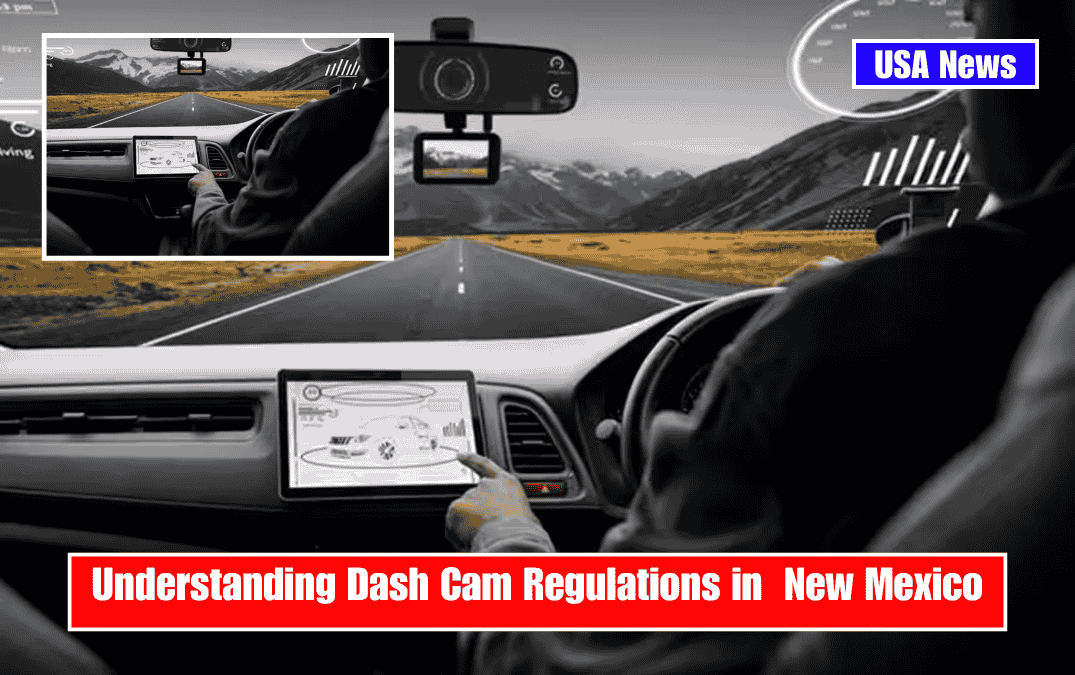Dash cams are increasingly popular among drivers for their ability to provide evidence in accidents and protect against fraudulent claims. However, their use is governed by specific state laws that address both safety and privacy concerns. Here’s a comprehensive overview of the legal landscape for dash cams in New Mexico as of 2025.
Legality of Dash Cams
Dash cams are legal in New Mexico for both personal and commercial vehicles. There are no statutes prohibiting the ownership or use of dash cams, but there are important regulations regarding how and where they can be installed, as well as rules for recording audio and video.
Mounting and Placement Requirements
Key Rule:
Dash cams and other non-transparent objects must not obstruct the driver’s view through the windshield or windows. This is a safety regulation designed to ensure maximum visibility for the driver.
Recommended Placement:
- Near the rearview mirror
- Bottom right corner of the windshield (passenger side)
- On the dashboard
Prohibited Placement:
- Directly in the driver’s line of sight
- Anywhere on the windshield or windows that would block or hinder the driver’s clear view
Violating these placement rules can result in fines or penalties, as improper installation is considered a traffic offense in New Mexico. The safest and most compliant option is to mount the dash cam on the dashboard or in a location that does not interfere with the driver’s field of vision.
Video Screen Restrictions
New Mexico law prohibits operating a vehicle with a video screen visible to the driver unless it is used solely as an aid to the operation of the vehicle (such as a GPS or backup camera). Dash cam screens should not display video footage to the driver while the vehicle is in motion. Violating this rule is a misdemeanor offense.
Audio Recording Laws
New Mexico is a single-party consent state for audio recordings. This means you can legally record audio in your vehicle as long as at least one person involved in the conversation (which can be you, the driver) consents to the recording. However, it is best practice to inform passengers that audio recording is taking place to avoid any disputes over privacy.
Privacy and Notification
- Passengers: While single-party consent applies, notifying passengers about audio and video recording is recommended for transparency and to avoid potential legal challenges.
- Public Use: Dash cam footage is generally admissible in court if it was obtained legally and in compliance with placement and consent laws.
Commercial Vehicles
The same rules apply to commercial vehicles as to private vehicles. However, employers should also be aware of federal and workplace privacy laws, especially regarding employee consent for audio and video recording.
Table: New Mexico Dash Cam Laws (2025)
| Aspect | Regulation |
|---|---|
| Legality | Dash cams are legal |
| Mounting | Must not obstruct driver’s view; recommended on dashboard or passenger side |
| Video Screen | Screen must not be visible to driver while driving |
| Audio Recording | Single-party consent required |
| Notification | Recommended to inform passengers |
| Admissibility | Footage generally admissible if obtained legally |
Key Takeaways
- Dash cams are legal in New Mexico, but must be installed so as not to impede the driver’s view.
- Audio recording is permitted with single-party consent, but notifying passengers is best practice.
- Screens displaying video must not be visible to the driver while the vehicle is moving.
- Improper placement or use can result in fines or misdemeanor charges.
By following these guidelines, drivers in New Mexico can use dash cams legally and effectively, enhancing safety and accountability on the road.
SOURCES:-
[1] https://www.ddpai.com/blog/dash-cam-laws/
[2] https://gpstrackit.com/blog/what-are-the-dashcam-regulations-in-each-state/
[3] https://law.justia.com/codes/new-mexico/2018/chapter-66/article-7/section-66-7-358/
[4] https://matrackinc.com/dash-cam-laws-by-states/
[5] https://www.enjuris.com/blog/resources/dash-cam-laws-by-state/









